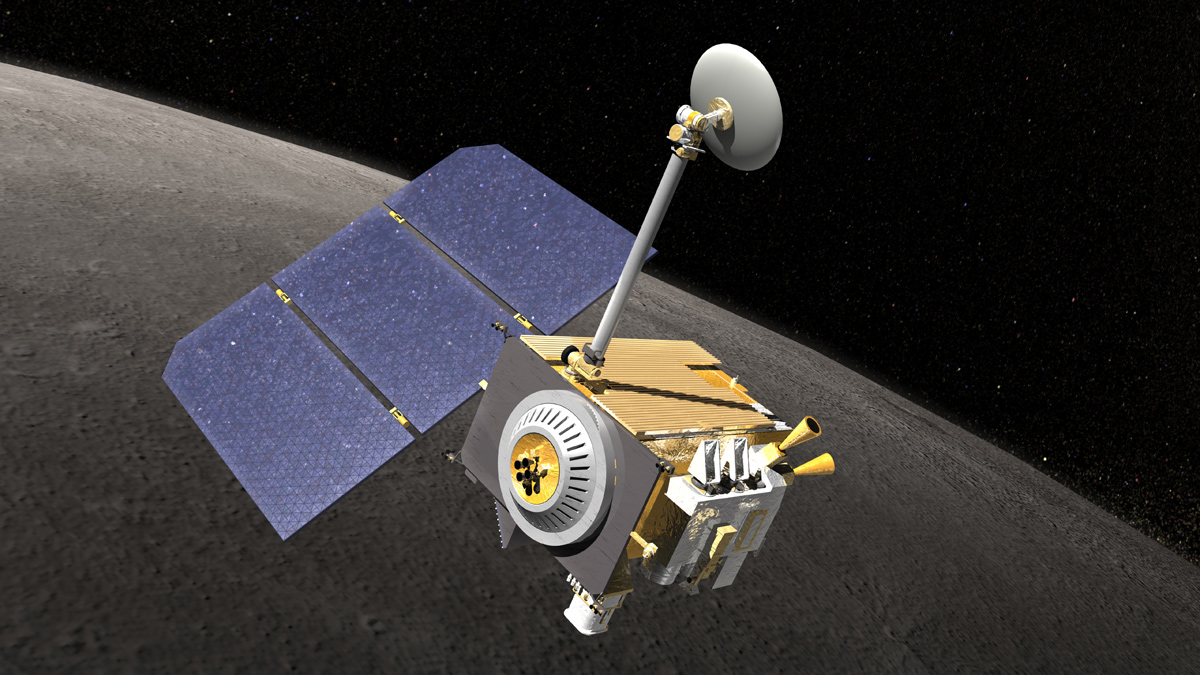
Next week's total lunar eclipse may thrill millions of skywatchers, but it poses a bit of a challenge for a sharp-eyed NASA moon probe.
The batteries that power NASA's Lunar Reconnaissance Orbiter (LRO) need sunlight to recharge, and the spacecraft will fly in darkness for an extended period of time during the total lunar eclipse, which will be visible throughout the Western Hemisphere overnight on April 14 and 15.
"The spacecraft will be going straight from the moon's shadow to the Earth's shadow while it orbits during the eclipse," Noah Petro, LRO deputy project scientist at NASA's Goddard Space Flight Center in Greenbelt, Md., said in a statement. "We're taking precautions to make sure everything is fine. We're turning off the instruments and will monitor the spacecraft every few hours when it's visible from Earth." [Total Lunar Eclipse of April 15 Explained (Video)]
LRO should make it through the eclipse just fine, Petro added.
"For quite a while, people in LRO have been analyzing what's going to happen during this eclipse," he said. "We'll make sure the world knows LRO survived with no problems."
The particular celestial geometry of next week's eclipse forced the LRO team to tread carefully. The spacecraft has zipped through other eclipses with its eyes wide open, because it was confined to Earth's shadow for just a short amount of time, NASA officials said.
Indeed, eclipses sometimes open windows of scientific opportunity for the LRO mission, researchers said. For example, the probe can measure how the moon cools during such events, yielding clues about the composition of the lunar surface.
Get the Space.com Newsletter
Breaking space news, the latest updates on rocket launches, skywatching events and more!
For viewers in the Western Hemisphere, the upcoming eclipse will officially begin at 12:53 a.m. EDT (0453 GMT) on April 15. The eclipse will achieve "totality," when all of the moon is plunged into Earth's shadow, at 3:06 a.m. EDT (0706 GMT). This most dramatic phase will end at 4:24 a.m. EDT (0824 GMT), and the eclipse will be over by 5:33 a.m. (0933 GMT).
Next week's eclipse is the first of four total lunar eclipses that will grace Earth's skies in roughly six-month increments over the next 18 months. The other eclipses in this "tetrad" occur on Oct. 8 of this year and April 4 and Sept. 28, 2015.
The $504 million Lunar Reconnaissance Orbiter mission launched in June 2009 to map the moon in unprecedented detail. The probe is about the size of a small car and sports seven different science instruments.
Editor's Note: If you snap an amazing picture of the April 15 total lunar eclipse or any other night sky view that you'd like to share for a possible story or image gallery, send photos, comments and your name and location to managing editor Tariq Malik at spacephotos@space.com.
Join our Space Forums to keep talking space on the latest missions, night sky and more! And if you have a news tip, correction or comment, let us know at: community@space.com.

Michael Wall is a Senior Space Writer with Space.com and joined the team in 2010. He primarily covers exoplanets, spaceflight and military space, but has been known to dabble in the space art beat. His book about the search for alien life, "Out There," was published on Nov. 13, 2018. Before becoming a science writer, Michael worked as a herpetologist and wildlife biologist. He has a Ph.D. in evolutionary biology from the University of Sydney, Australia, a bachelor's degree from the University of Arizona, and a graduate certificate in science writing from the University of California, Santa Cruz. To find out what his latest project is, you can follow Michael on Twitter.











